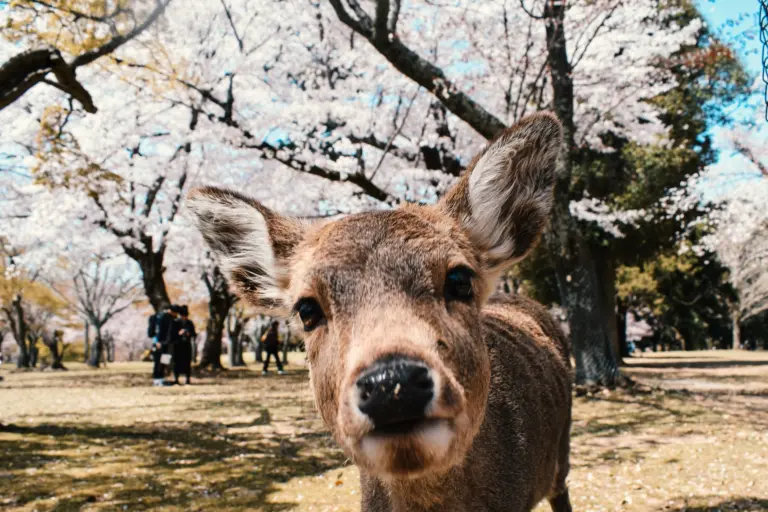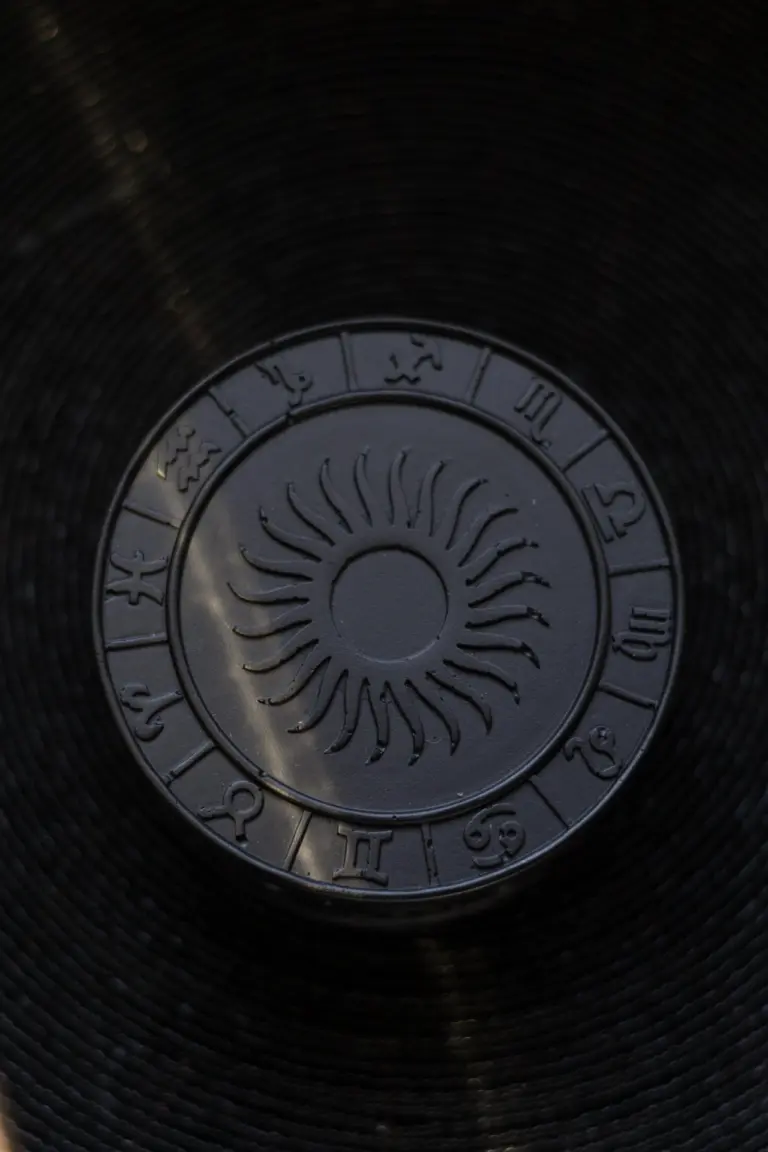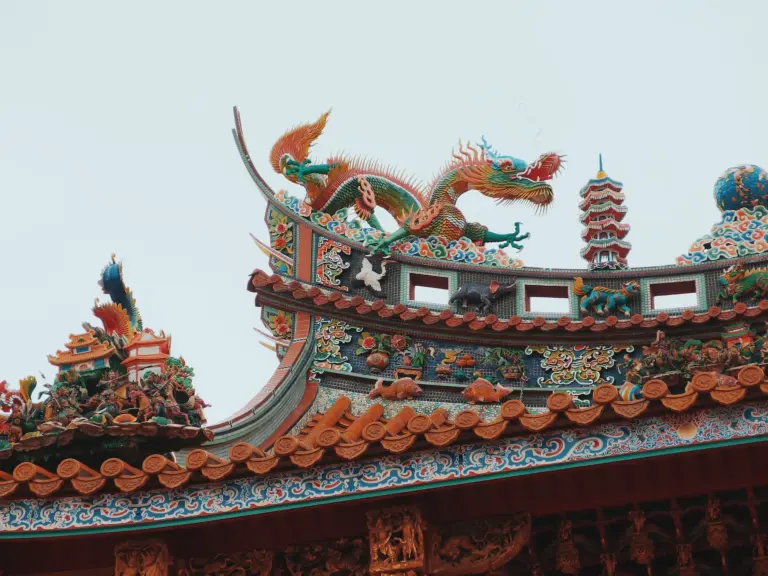The Tree of Life is a deeply significant symbol that permeates cultures, religions, and philosophical systems across the globe!
Its roots burrow deep into our collective consciousness, while its branches reach high towards the heavens, painting a vivid metaphorical image of connection, growth, and continuity.
This widespread archetype weaves through ancient cosmologies, religious traditions, and modern-day belief systems, resonating with our deepest sense of what it means to be human, and what it means to be a part of the natural world.
Learning about the Tree of Life is like a trip into our shared heritage, our diverse interpretations of the divine, and the sacred geometry that underpins our reality.
This journey offers not just enlightenment, but also a mirror into our own souls. Intrigued? Read on.
Table of Contents
Toggle
What is the Tree of Life?
In its most basic sense, the Tree of Life represents the interconnectedness of all life forms on Earth, both tangible and spiritual.
Think of it as a cosmic diagram that explains the intricate relationships between life, existence, and the universe.
Its roots burrow deep into the ground, embodying the Earth, the material world, and the descent into the underworld.
The trunk serves as the foundation, the structure that allows growth.
Finally, the branches and leaves that stretch outwards and upwards signify the spiritual world.
In broader interpretations, the Tree of Life often symbolizes concepts such as rebirth, growth, strength, and unity.
It’s seen as a bridge between different realms (heaven, earth, and the underworld) and different states of being (past, present, future).
Tree of Life in Sacred Geometry
What is Sacred Geometry?
Sacred geometry is a concept that ascribes symbolic and sacred meanings to certain geometric shapes as you might have guessed from the name.
It’s an ancient form of design, based on the belief that certain shapes have a divine quality.
The concept is found throughout the natural world and is also seen in art, architecture, and spiritual practices across many different cultures, both ancient and modern.
It is thought that these geometric patterns can bring us closer to the divine and illuminate the fundamental designs found in the universe.
These sacred geometric shapes are often used in the design and construction of religious structures. They’re also used in sacred art and in the creation of religious symbols.
In sacred geometry, certain shapes have specific meanings. For example, the circle is often seen as a symbol of unity and wholeness, while the spiral is associated with growth and evolution.
Other familiar forms include the Vesica Piscis, Metatron’s Cube, the Seed of Life, Fruit of Life, Egg of Life, and the Platonic Solids.
Sacred geometry is thought to offer insight into the nature and origins of the universe!
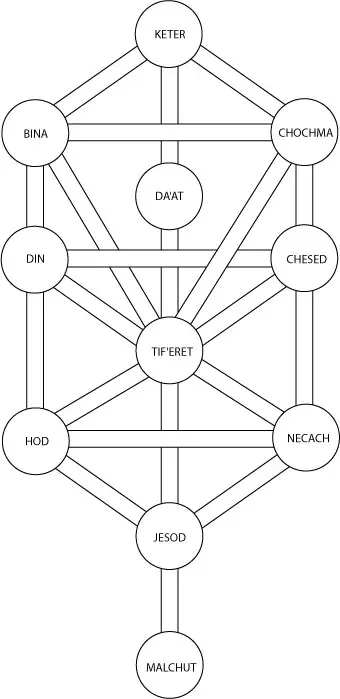
The Sefirot and the Kabbalistic Tree of Life
In Sacred Geometry, in its most simple form, the Tree of Life is composed of ten nodes symbolizing different archetypal concepts. These nodes are then connected by 22 lines.
This design is most often associated with the Kabbalah (ancient Jewish mystical tradition), where it is used as a diagram to understand the nature of God and the manner in which He created the world ex nihilo (out of nothing).
The nodes are referred to as Sefirot (singluar: sefirah), each representing a different attribute of God through which He manifests His will.
In addition, the Tree of Life is sometimes overlaid on other forms of sacred geometry.
For instance, it can be fit within the “Flower of Life” pattern in such a way that each sefirah aligns with the center of a different circle.
This represents the way that different aspects of creation all stem from the same “root” and are part of the same divine plan.
You can read more about the Kabbalistic Tree of Life here.
And did you know the Kabbalistic Tree of Life even has a connection with the Tarot cards?
Tree of Life Across Cultures
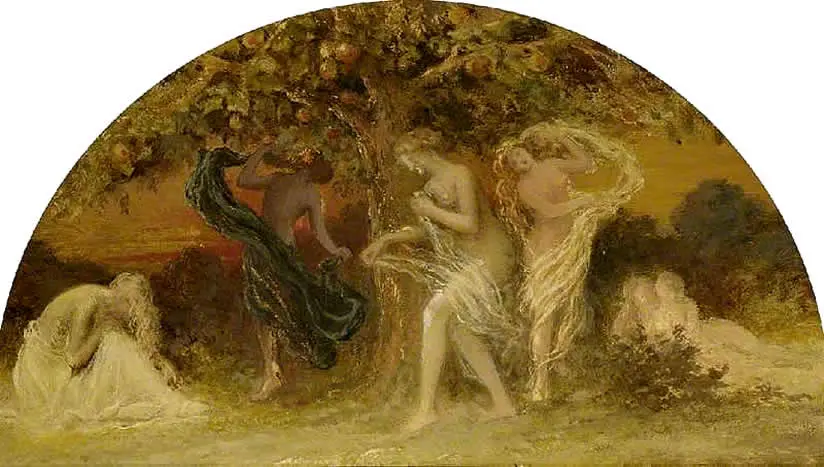
Tree of Life Meaning in Greek Mythology
In ancient Greek mythology, the Tree of Life takes a form of the sacred tree associated with the goddess Gaia, the ancestral mother of all life, the personification of Mother Earth.
The tree was believed to be the source of the golden apples of immortality, reserved only for the gods and guarded by the Hesperides, nymphs of the evening.
The hero Heracles was famously tasked with fetching these apples as one of his Twelve Labors.
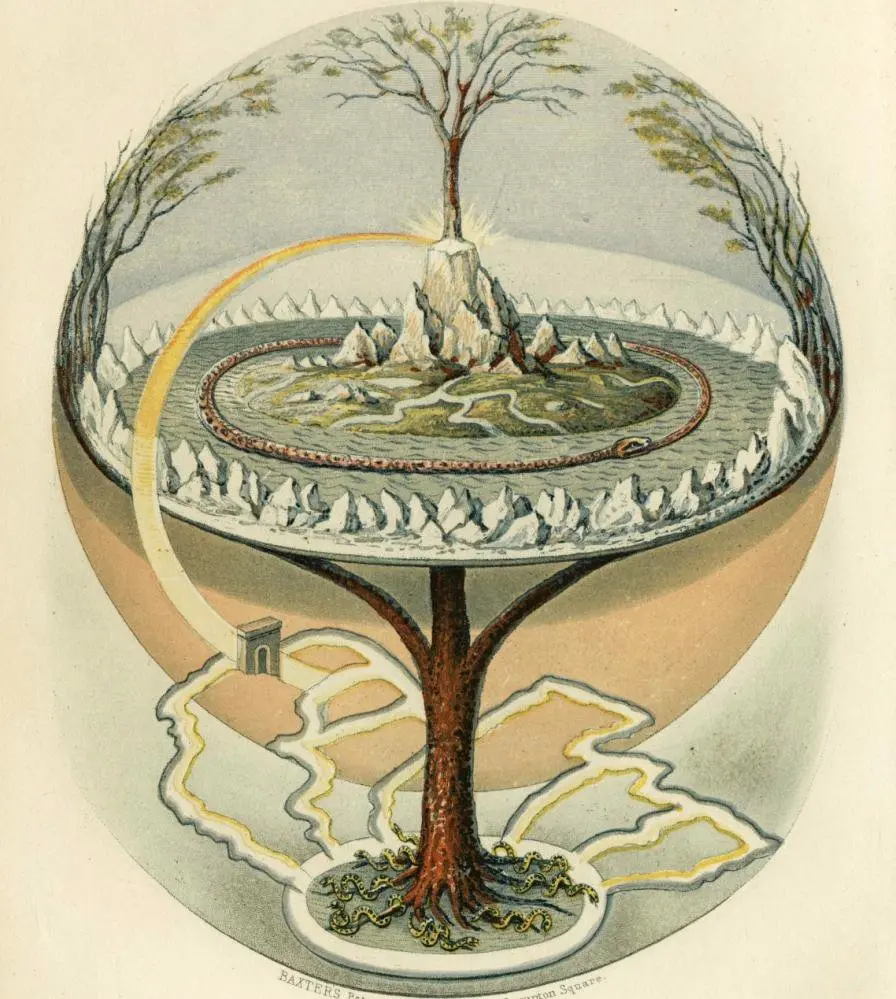
Tree of Life Meaning in Norse Mythology
The Norse knew the Tree of Life as Yggdrasil, an immense and central cosmic tree that connects the nine worlds of the Norse cosmology.
It stands evergreen, with roots that reach deep into the underworld and branches that stretch towards the heavens.
Around Yggdrasil’s roots and branches dwell various creatures, and the gods meet daily at the tree to assemble their council.
Tree of Life Meaning in Sumerian Mythology
In ancient Mesopotamia, the Tree of Life is depicted in Sumerian artifacts, it is often shown as a palm tree, signifying their reverence for the tree’s ability to provide sustenance and shade in the harsh desert environment.
The Sumerian Tree of Life was seen as a bridge between heaven and earth, and the king was traditionally seen as the earthly incarnation of the tree.

Tree of Life Meaning in Egyptian Mythology
In Ancient Egyptian mythology, the Tree of Life, known as the Isched tree was believed to stand in the realm of the gods, in the divine place of Ra, the sun god.
This sacred tree was said to hold the knowledge and secrets of the divine plan.
Egyptians revered the Isched tree as the tree in which life and death are enclosed.
The fruit it bore, when eaten, bestowed the eater eternal life, making them “one of the blessed dead”. This mirrors the theme of immortality which is common to the Tree of Life symbolism in other cultures.
Also, the Egyptian gods were said to be born from this tree. For instance, Isis, the goddess of fertility, was born from the acacia tree, considered a variant of the Tree of Life.
The acacia was also thought to connect the mortal realm and the heavens, underscoring its representation as the Tree of Life.
Tree of Life in Religion

Tree of Life Meaning in Christianity
In Christianity, the Tree of Life first appears in the Book of Genesis.
It’s placed by God in the Garden of Eden along with the Tree of the Knowledge, from which Adam and Eve were forbidden to eat.
However, unlike the latter tree, the Tree of Life held the promise of eternal life for those who ate its fruit.
After the Fall of Man, when Adam and Eve were expelled from the Garden for eating from the Tree of Knowledge, they were cut off from the Tree of Life, symbolizing their disconnection from God and loss of immortality.
In the Book of Revelation, the last book of the New Testament, the Tree of Life makes a reappearance in the description of the New Jerusalem.
It is said to bear twelve kinds of fruit and its leaves are for “the healing of the nations.” Reflecting the restoration of humanity’s access to eternal life through the redemption provided by Christ.

Tree of Life Meaning in Judaism
In Judaism, the Tree of Life (Etz Chaim) also first appears in the Torah in the Book of Genesis and follows the same story with Adam and Eve.
The Kabbalah teaches that this tree is a symbol for the life-giving source of the divine flow of blessing and soul-energy into the world, known as the “sefirot.”
The Torah itself is also referred to as a Tree of Life. In the Book of Proverbs, Wisdom is said to be a Tree of Life to those who hold fast to her.
Hence, many synagogues will have an image of a tree, known as the “Tree of Life,” on the curtains of the Ark where the Torah scrolls are kept.

Tree of Life Meaning in Islam
In Islam, the concept of the Tree of Life doesn’t exactly mirror the prominence it holds in other cultures and religions, but the religion does feature a special tree known as the Tree of Immortality.
This tree is mentioned in the Quran, in the story of Adam and Eve, similar to its depiction in the Christian Bible.
In Surah Al-A’raf (7:20), it’s mentioned that Satan deceived Adam and Eve to eat from the tree by saying it would grant them eternal life and a kingdom that would never deteriorate.
However, the Quran does not label this tree as the “Tree of Life,” but rather the “Tree of Immortality.”
In this context, the tree symbolizes disobedience to God’s command, led by the deception of Satan.
It signifies the initial fall of mankind but also the mercy and forgiveness of Allah (SWT), who then guided Adam and Eve on how to seek repentance.
Tree of Life Meaning in Hinduism
In Hinduism, the Tree of Life is often referred to as the world tree and it’s usually depicted as a banyan tree also known as Ashvattha. It also symbolizes the universe’s interconnectedness.
In the Bhagavad Gita, the Tree of Life is described as an eternal, sacred fig tree with its roots in the heavens and branches extending down to Earth.
This inverted tree is said to symbolize how life on Earth is connected to the divine realm, and it serves as a reminder of the spiritual realm that is our true home.
The roots represent Brahma, the creator god and the origin of all life, while the trunk symbolizes Vishnu, the preserver god, who maintains the cosmic order. The branches and leaves represent Shiva, the destroyer, symbolizing the transitory nature of the world that is subject to birth, growth, decay, and death.
Moreover, in the Katha Upanishad, the body is metaphorically referred to as a tree, with the roots as the hair and the skin as the bark. The human body is seen as a microcosm of the cosmic tree.

Tree of Life Meaning in Buddhism
In Buddhism, the Tree of Life is commonly referred to as the Bodhi Tree with the name of Ashvattha.
This is the tree under which Siddhartha Gautama (the central figure in the Theravada tradition), who would later become known as the Buddha, attained enlightenment.
It’s said that he meditated under this tree, without moving, for seven days and nights, after which he attained complete awakening and understood the nature of suffering and the steps necessary to eliminate it.
It’s basically like a Tree of Enlightenment, representing the ultimate spiritual awakening.
The actual Bodhi Tree is a large and very old Sacred Fig tree (Ficus religiosa) located in Bodh Gaya, India.
Many Buddhists make pilgrimages to this site, and the tree is protected as a vital link to the life and teachings of the Buddha.
Tree of Life Meaning in Paganism
In many Pagan religions, the Tree of Life is often associated with the Mother Goddess.
As a symbol of fertility and abundance, the tree is believed to nurture all life forms.
It also embodies the essence of the Maiden, Mother, and Crone, the three aspects of the Triple Goddess.
Pagans also celebrate the Tree of Life during their Sabbats (holy days).
Tree of Life in Psychology
Carl Gustav Jung, a Swiss psychiatrist and psychoanalyst, used the symbol of the Tree of Life extensively in his work.
In Jungian psychology, the Tree of Life is a powerful symbol for the unconscious mind, representing the underlying linked concepts of the individual and the collective unconscious.
For Jung, trees were a symbol of transformation and individuation. They represent the process of becoming an individual separate from the collective consciousness, of finding one’s own unique path.
The process of growth, shedding of old leaves, and blossoming of new ones is analogous to the journey of self-discovery and personal development that every one of us goes through.
Furthermore, the Tree of Life connects the underworld (the unconscious mind), the earthly world (the conscious mind), and the heavens (the higher self or spiritual self).
In Jungian psychology, integrating these elements is a part of the process of individuation, leading to a fully realized self.
He believed the Tree of Life archetype originate from the collective unconscious, a level of unconscious shared with other members of the human species.
Tree of Life Tattoo Meaning
A Tree of Life tattoo often represents personal growth, the cycle of life, and connection to one’s ancestry.
With its roots burrowed in the earth and branches reaching towards the sky, it signifies a deep connection to the world around us, symbolizing how we grow and change through our experiences, yet remain connected to our roots.
Just like the Tree of Life, the holy Sak Yant tattoos from Thailand also carries powerful meanings. Read on if you’re interested in learning more about Sacred Geometry tattoos!









